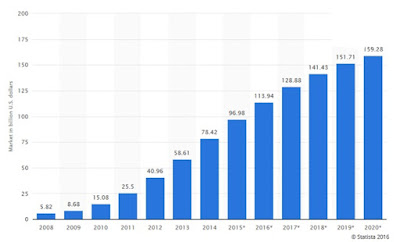Twitter Feed
Strategies And Technologies for Cloud Computing Interoperability (SATCCI)
As I alluded to in an earlier post, a major cloud computing interoperability event will be held in conjunction with the Object Management Group (OMG) March Technical Meeting on March…
Government Cloud Computing E-zine Launched
Today marks the launch of a new electronic magazine dedicated to addressing cloud computing within the government space. Over the last year during my personal exploration of this marketspace, I’ve…
NCOIC Plenary: Cloud Computing Working Group
Last week, I had the pleasure of participating in the NCOIC Cloud Computing Working Group. Led by Cisco Systems Distinguished Engineer, Mr. Krishna Sankar of Cisco Systems, the meeting purpose…
2nd Government Cloud Computing Survey – A Sneak Peek
This month, we’re in the middle of collecting data for our 2nd Government Cloud Computing Survey. to peek your curiosity (an to entice your participation) here is a sneak peek…
Government could save billions with cloud computing
In a recent study, published by MeriTalk, Red Hat and DLT Solutions, the Federal government could save $6.6 billion by using cloud computing or software-as-a-service. “Looking at 30 federal agencies,…
Cloud Games at FOSE 2009
ONLINE REGISTRATION NOW AVAILABLE Booz Allen Hamilton is launching its Cloud Computing Wargame (CCW)T at FOSE March 10-12, 2009 in Washington, DC. The CCW is designed to simulate the major…
IBM and Amazon
According to the Amazon Web Services (AWS) site, you can now use DB2, Informix, WebSphere sMash, WebSphere Portal Server or Lotus Web Content Management on Amazon’s EC2 cloud. “This relationship…
A Berkeley View of Cloud Computing
Yesterday, Berkeley released their View of Cloud Computing with a view that cloud computing provides an elasticity of resources, without paying a premium for large scale, that is unprecedented in…
Cloud Economic Models
One of the most important drivers of cloud computing in the Federal space is its perceived “compelling” economic value. Some initial insight on the economic argument is now available on…
Cloud Computing In Government: From Google Apps To Nuclear Warfare
Today, I want to thank John Foley of InformationWeek for an enjoyable interview and his excellent post, Cloud Computing In Government: From Google Apps To Nuclear Warfare. Our discussion covered…
- Enable cloud service arbitrage based on cost, performance or operational need;
- Help companies migrate operations to the cloud and assist with staff augmentation and training;
- Provide cloud service auditing and SLA monitoring services;
- Help in focusing and managing organizational cloud service demand;
- Provided toolsets to assist in the migration and integration of enterprise applications; and
- Help in change management and the selection and integration of other managed services.
By automating and operationalizing the governance of cloud services, CSBs can efficiently multi-source services and augment them with third party metering and monitoring. Using CSBs, organizations also accelerate their transition to hybrid IT models. This marketplace is typically segmented type of services: cloud brokerage and cloud brokerage enablement, wherein cloud brokerage enablement is further segmented into internal and external brokers. When used internally, cloud enablement platforms helps enterprises adopt the new hybrid IT and multi-sourced operating model. By building organic expertise, companies can personalize IT service consumption and unify
IT service delivery through the use of a corporate self-service store, a dynamic service marketplace, and continuous delivery. This centralized, supply chain approach unifies the order, execution, and management of multi-sourced solutions across legacy and cloud resources, by centrally delegating and tracking execution.
(This post was brought to you by IBM Global Technology Services. For more content like this, visit Point B and Beyond.)
( Thank you. If you enjoyed this article, get free updates by email or RSS – © Copyright Kevin L. Jackson 2016)
Cloud Computing
- CPUcoin Expands CPU/GPU Power Sharing with Cudo Ventures Enterprise Network Partnership
- CPUcoin Expands CPU/GPU Power Sharing with Cudo Ventures Enterprise Network Partnership
- Route1 Announces Q2 2019 Financial Results
- CPUcoin Expands CPU/GPU Power Sharing with Cudo Ventures Enterprise Network Partnership
- ChannelAdvisor to Present at the D.A. Davidson 18th Annual Technology Conference
Cybersecurity
- Route1 Announces Q2 2019 Financial Results
- FIRST US BANCSHARES, INC. DECLARES CASH DIVIDEND
- Business Continuity Management Planning Solution Market is Expected to Grow ~ US$ 1.6 Bn by the end of 2029 - PMR
- Atos delivers Quantum-Learning-as-a-Service to Xofia to enable artificial intelligence solutions
- New Ares IoT Botnet discovered on Android OS based Set-Top Boxes



